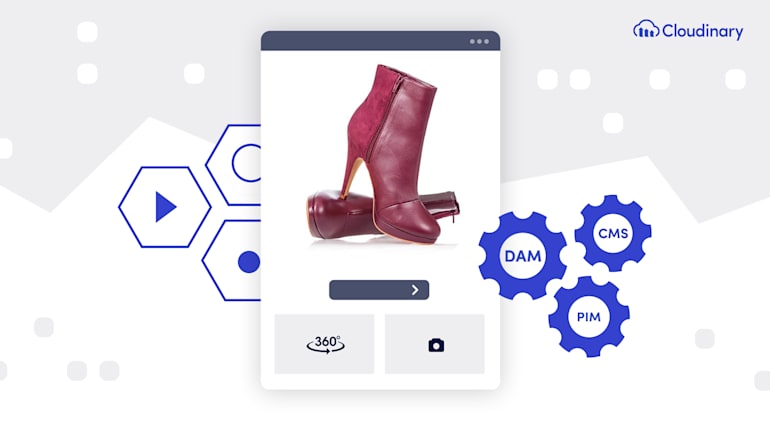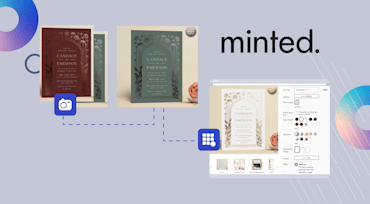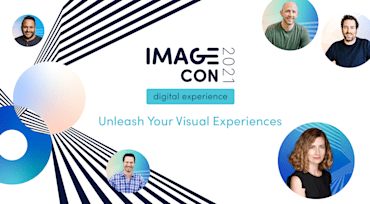How many vendor solutions do you rely on for a superior user experience for your e-commerce site? How many tools do you use to manage the site? What services are used to manage media files, email marketing, digital ads, customer service, text messages, and the search feature?
Are you adopting those tools because they’ve proven to be of tremendous help in achieving your business goals? Or are you disappointed by their limited capabilities or burdened by internal silos and complexity?
To help you answer those questions and establish an actionable framework for your e-commerce platform, Gary Ballabio, head of technology partnerships at Cloudinary; and Tim Benniks, director of web development at Valtech, recently hosted a webinar entitled The Road to Headless. Their presentation delved into the traditional infrastructure for managing e-commerce sites and the innovative solution offered by the headless architecture and microservices.
Here are the topics:
- The difference between the two traditional approaches: best of breed and best of suite
- The pros and cons of those two approaches in managing e-commerce sites
- The ways in which the headless architecture effectively resolves the drawbacks of the traditional approaches
- The factors that determine if the headless architecture is right for you
Understanding Best of Suite and Best of Breed
Best of suite and best of breed, the two traditional forms of SaaS adoption, have pros and cons. In simple terms, Tim offered the analogy of a sandwich:
- Best of suite is like the one sandwich offered by a chef who knows you’ll love it.
- Best of breed furnishes you with numerous ingredients (functionalities), and it’s up to you to make the sandwich that best suits your taste (business needs).
Best of Suite
Pros: Many e-businesses build user experience by connecting various tools through a digital experience platform (DXP), such as Adobe Experience Cloud or Sitecore. Consequently, those customers coordinate with just one vendor and one suite of products, confident that they have everything they need and that the DXP will help their business grow over time.
Cons: Such an all-in-one solution ties your success and opportunities to the innovation and capability that your single vendor delivers. It might truly be best of suite now but might quickly fail to stay being that, or your business might want to switch gear in a way that your platform doesn’t support. For example, since the DXP is not scalable, adding new features is arduous, even if only one at a time. Also, the all-in-one-box setup means that you may need to redeploy the entire system for updates, and it could take more than a full day to tweak a few lines of CSS to change something from red to blue.
Best of Breed
Pros: You can work with any vendor who specializes in a particular area to optimally leverage the capabilities that your teams desire.
Cons: This decentralized apparatus makes orchestration and governance far more complex because you must come up to speed with all your vendors’ unique interfaces, CDNs, contracts, billing systems, etc. Your IT experts must build and maintain API integrations and ensure that the vendor applications support your infrastructure and business goals without straining other internal resources.
Resolving Pain Points With the Headless Architecture
Amplifying or replacing the best-of-suite model with the headless architecture opens a whole different horizon. With headless, you can easily swap out the ingredients of that near-perfect sandwich without having to patronize another bakery or handle the chore from home.
Besides being secure and simple like the DXP approach, a headless model is also scalable, flexible, and customizable. You’re ensured of access to and collaboration of back-end systems in addition to a unified, consistent front-end, all of which results in an easily expanded and a more efficient workflow.
For example, by leveraging both a headless CMS and a headless DAM, you can use best-of-breed visual-media capabilities not supported by your CMS and gain a huge advantage in e-commerce, a visually dominant industry. You can also, at short notice, retain or switch vendors for site enhancement or campaign launches without disrupting other parts of your business. In effect, headless commerce opens up massive opportunities for your teams to do their job well, free from technology constraints.
Determining If the Headless Architecture Is Right for You
Most likely, your business contains an entrenched infrastructure backbone that’s hard to change, let alone that multiyear vendor contracts complicate the picture further. For the companies that can manage an effective switch to headless, benefits abound. As an example, Tim described the process through which he transitioned a leading fashion brand, piece by piece, to a headless model, ultimately leading to a twentyfold sales growth.
The first step is to identify a “hero”—an individual or group who can promptly implement the changes driven by the following:
- Architecture. It’s high time to adopt a more efficient architecture if your existing platform is marred by weak performance, vendor lock-in, and no space for creativity and enhancements.
- Business. Your existing platform might be too costly to maintain, hence inadequate for running modern campaigns or helping achieve conversion goals.
- Media. If your web or marketing team cannot deliver the in-depth user experience they desire with a single platform, the need for more capabilities becomes clear.
On the other hand, if your solution stack contains a bundle of items that you're not allowed to change, consider the option of integrating your existing services for a simplified and unified stack.
In any case, at the end of this evaluation, you might want to choose another sandwich—another complete platform—but keep your best-of-suite model because it's just too hard to combine everything. But you might also conclude that incorporating a headless CMS, a headless DAM, and other headless applications is exactly the right thing to do for your business.
You won’t know unless you answer those hard questions, however.
Checking Out More References on Headless
- For an in-depth description of how the headless approach fits into a broad e-commerce strategy, read our Guide to Building the Ultimate E-commerce Website.
- For details on how to streamline content delivery with the headless architecture, see our whitepaper Simplifying the Headless Architectural Paradigm.
- For more nuances on the benefits of the headless architecture and pointers on resolving the related caveats, as well as an enlightening recount of media experts’ real-world experience with headless, watch our webinar The Road to Headless.





